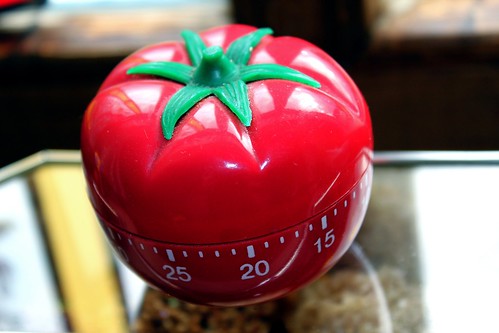I found this wonderful comic on Mashable “The Field Guide to Procrastination” that identifies 12 different methods for work avoidance or procrastination, defined in Wikipedia as “putting off tasks for a later date.” We all do it. The comic is funny but a fairly accurate depiction of how we procrastinate. I tend to be a lister, cleaner, or distractor, but in my 35 years working in the nonprofit sector, I’ve probably used all of these at one time or another, plus others not on the list.
While some procrastination can be beneficial, it can reduce your productivity if it gets out of hand. I think there is something called productive procrastination, especially if a lot of your work requires tasks like writing or analysis that requires deep concentration. I find that procrastination can be a helpful “mental break” between these types of tasks if your procrastination is actually something on your to do list. Productive procrastination can help you embrace serendipity and discovery – encounter new ideas or people for example. If you are trying to incorporate more exercise into your day, walking and moving is a very productive form of procrastination because it helps your brain concentrate (and you burn calories not to mention it being more healthy than sitting for 8 hours).
Still, you have to get stuff done. So, it is important to not only to understand to why you procrastinate but to catch yourself in the act and make a shift. That shift is easier when you have some good techniques for actually get those tasks done. Here’s five ways to avoid procrastination and be more productive:

1. Pomodoro: The pomodoro technique is a time management methodology created by Francesco Cirillo. Pomodoro enables you to take the stress out of deadlines by breaking down your day into segments, you work solidly during these periods and remove all distractions. At the end of the pomodoro session you reward yourself with a break. The Pomodoro technique which is very similar to time blocking (assigning discrete blocks of time to a particular task and using a timer), but the method helps you if tend to use distraction to procrastinate. The Focus Booster app can help you apply this method.
2. Time Blocking: The to do list and breaking down tasks into doable chunks is one dimension of time management, but how you lay out those tasks over your schedule is another. In this video, Chris Brogan talks about how he manages his time. I like how he takes a designer’s approach to using his time. It made me think of building stuff with legos. He takes you through a 6-hour chunk of time in half-hour and hour increments. He clearly identifies types of tasks: planning (prep to do the task), reading, production (writing), interviews, email, and commenting. He doesn’t share how and when he take breaks which are essential to focus and concentration. Also, in practice, many people may not have that much control over their work day, especially those working in a nonprofit organizations.
3. Workstation Popcorn: This is a variation on the time blocking technique, but involves moving to a different workstation after a 2-2.5 hour chunk of work that is a very specific to do list. Developed by Joel Runyon, the method acknowledges that the hardest thing about getting stuff done is selecting what to do. This is when I tend to procrastinate. The key is writing specific action steps and assigning time limits – your to do list can be written on paper or use an app like Any.Do. Workstation popcorn is probably best suited for remote workers and people who work at home, but you can do it in an office setting. I have been using this technique for the past couple of months to incorporate walking and exercise into my day. The benefit of moving around helps with concentration. I don’t actually change my work location, but I do get up and take a 20 minute walk to clear my head instead of using my computer keyboard as a lunch tray. I have done conference calls on my mobile phone while walking.
4. 18 Minutes A Day: This method comes from the book 18 Minutes: Find Your Focus, Master Distraction, and Get the Right Things Done by Peter Bregman who blogs at at the HBR. The method can be combined with these others and is very simple. You start each day writing down the three most important tasks on your to do list and reflecting on it for 5 minutes. Then you remind yourself every hour (with an alarm on your phone) to stay on task. When the alarm goes off, you look at the your list and assess where you are. At the end of the day, you reflect five minutes on what you accomplished. This can help you catch yourself when you procrastinate and establish better habits. I never would have completed writing my second book if it were not for this book.
5. Bullet Journal: This technique is a process of curating your daily, weekly, and monthly tasks to help you prioritize. Bullet Journal is done by hand. While list making can be a double-edged sword (can be a procrastination technique too), the process of writing your list out on paper can help you slow down, avoid online distractions, and help you focus. The video of the process may seem overwhelming, but can modify it.
Getting past procrastination to “do done,” is about organizing your time and tasks. It is about estimating how much time it tasks, breaking down big projects into smaller chunks, and understanding when you best concentrate. It also takes some self-awareness of your procrastination methods and being able to set good productive habits.
How do you procrastinate? How do you get work done? What is your method?
Beth Kanter is a consultant, author, influencer. virtual trainer & nonprofit innovator in digital transformation & workplace wellbeing.
